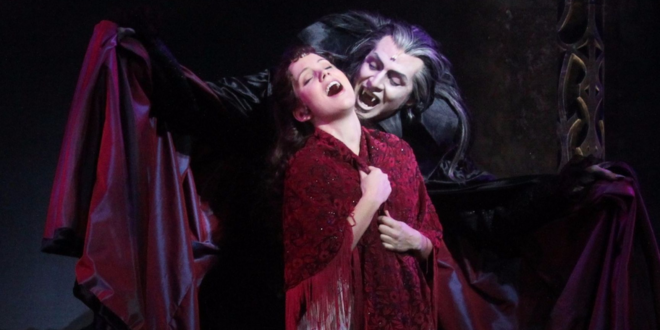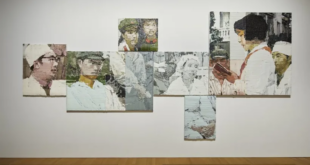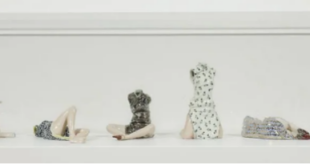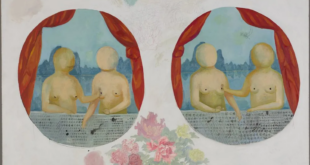To describe Tanz Der Vampire after my initial viewing, I would say it is a nearly comical cliche about a protagonist who successfully saves his innocent lover from the vampires, only for the world to be doomed because the girl has secretly turned into a vampire and infects everyone else. I even learned the word “Knoblauch” (garlic in German) as my second German word (in case you are wondering, the first is Schatten) simply because there is a song called Knoblauch where people just sing “knoblauch” nonstop.
However, when I delved deeper into the lore of vampires, closely examined the lyrics, listened to Michael Kunze’s talks, and watched the musical again, I unearthed deeper meanings that were previously concealed by appearances, which makes the musical much more intriguing.
This is a story about growth. The world we live in is a bloodthirsty one. The greed, selfishness, and contradictions of vampires mirror the deceit and treachery of the adult world. In Sarah’s eyes, this bloodthirsty adult world is both dangerous and alluring, tempting her step by step into the abyss of desire. Her world once consisted of only a small room, a small bathtub, and a small sponge. Her father, the innkeeper, locks his beautiful daughter in her room, ostensibly to protect her from danger. However, her yearning for the unknown danger compels Sarah to step into this new bloodthirsty world, where the dance begins. In Alfred’s eyes, this world is cruel and dangerous. Of course, he could have maintained an attitude of detached indifference, and initially, he did. Then, however, he got entangled in it because of his lover, ultimately becoming part of the adult world and transforming into one of them.
This is a story about desire and struggle. Graf von Krolock is a contradictory figure who despises desire but cannot abandon it. He owns a room full of books, evidently pursuing reason in his former life. But as a vampire, he cannot resist his bloodthirsty nature. The castle’s setting, with famous paintings on the walls, resembles a grand cathedral. The clash of religion and reason, the combination of abstinence and indulgence, the connection between degradation and sublimation are vividly embodied in Graf von Krolock. This sense of conflict and contradiction, enhanced by the stage design, immerses the audience in a thick tragic atmosphere. But is it only Count Krolock who is caught in the vortex of desire? Professor Abronsius wants a Nobel Prize; Sarah wants to explore the world; the innkeeper is lustful; and Alfred wants to elope with his beloved. The Count feeds on mortals and their greed, eventually transforming all desires into bloodlust, falling into eternal boredom.
This is a story about religion and philosophy. Michael Kunze once said “Ich habe Nietzsche in dieser Figur parodistisch gespiegelt” (I have parodistically mirrored Nietzsche in this figure). The Count sings “Gott its tot!“ and calls Sarah “Sternkind” (star kid), referencing Nietzsche’s first greeting to Salomé: “From which star have we fallen together into the world?” Graf von Krolock embodies Nietzsche’s Dionysian spirit: initially referring to the tragic ecstasy gained from the individual’s suffering and destruction merging with the cosmic life force, later denoting the tragic ecstasy derived from the absolute meaninglessness of life. But he is only a poor imitation, a parody. Nietzsche’s Dionysian spirit is associated with the Übermensch (superman) — he believed that humans are not ends but bridges, and one must surpass oneself to become Übermensch. For the evolution to happen, God must die. In Thus Spoke Zarathustra, Nietzsche points out that the Übermensch is the meaning of the earth. This implies that the Übermensch negates heaven and replaces God. Nietzsche’s destruction was for the sake of greater creation, but the Count does not achieve this. He never truly understands Nietzsche, so he remains a parody, an anti-Übermensch.
Personally, I think Graf von Krolock resembles Schopenhauer more: “Life is a cycle of desires. When unfulfilled, it brings pain; when fulfilled, it brings boredom. Life oscillates between pain and boredom.” It is not only the Count who struggles; all of us sway in the void.
As the Count says:
Doch die wahre Macht, die uns regiert,
(But the true power that rules us)
ist die schändliche, unendliche, verzehrende, zerstörende
(is the shameless, infinite, devouring, destructive)
und ewig unstillbare Gier.
(and eternally insatiable greed. )
Euch Sterblichen von morgen, prophezeih´ ich heut’ und hier:
(To you mortals of tomorrow, I prophesy today and here: )
Bevor noch das nächste Jahrtausend beginnt,
(Before the next millennium begins, )
ist der einzige Gott, dem jeder dient,
(the only god everyone serves, )
die unstillbare Gier.”
(is insatiable greed.)
This is a story about life and death, the undead and the immortal. No matter how noble or sordid a person is, death brings stillness. When we become slaves to desire, hopelessly swinging between boredom and pain, is death the only destination? As Magda murmurs in Tot zu sein ist komisch:
Tot zu sein ist komisch
(Death is strange)
Dieses Grapschen und sein Glotzen
(His groping hands and leering eyes)
Als er lebte, war zum Kotzen
(Were revolting when he was alive)
Doch als Leiche wirkt er jetzt
(But as a corpse)
Ganz gesittet und gesetzt
(He looks dignified and calm)
The VBW website describes Tanz Der Vampire as “a merry dance of the undead – towards immortality.” I must admit I was struck by this phrase. Those undead, bloodthirsty zombies rely on death for their survival. It is deeply ironic, for the “merry dance” is just a fruitless struggle, and the so-called “immortality” is more like an eternal curse. But who can say we, every one living, are not dancing, chasing eternity despite the awareness of its absurdity? Perhaps the search for the meaning of life is a dance towards immortality.
This is a comedy, yet it is more of a tragedy that reveals absurdity and ridicule. The absurdity, reflected from tragedy, is what gives people the most shock and strength. Just like Santiago’s determination in The Old Man and the Sea, the tranquility after endless suffering of Fugui in To Live. The enduring popularity of the vampire genre lies in its representation of greed and fear, topics that humanity will forever ponder.
Graf von Krolock’s proclamation “Gott ist tot!” (God is dead) echoes not just Nietzsche’s philosophy, but the existential crisis at the heart of the human condition. In a world where traditional values and beliefs crumble, we are left to create our own meaning, to find purpose in the face of apparent meaninglessness.
Yet, perhaps the true horror is not the death of God, but the birth of new, insatiable gods – our own unquenchable desires. As the Count prophesies, the “unstillbare Gier” (insatiable greed) becomes the deity of the new millennium, driving us into an endless, frenzied dance of consumption and want.
However, in this dark vision, there lies a spark of liberation — If God is dead, if immortality is a curse rather than a blessing, then the responsibility for finding meaning falls to us. Like Sarah stepping out of her small room into the vast, dangerous world, we too must confront the darkness, both within and without.
 Tempus Magazine By Students, For Students
Tempus Magazine By Students, For Students 



